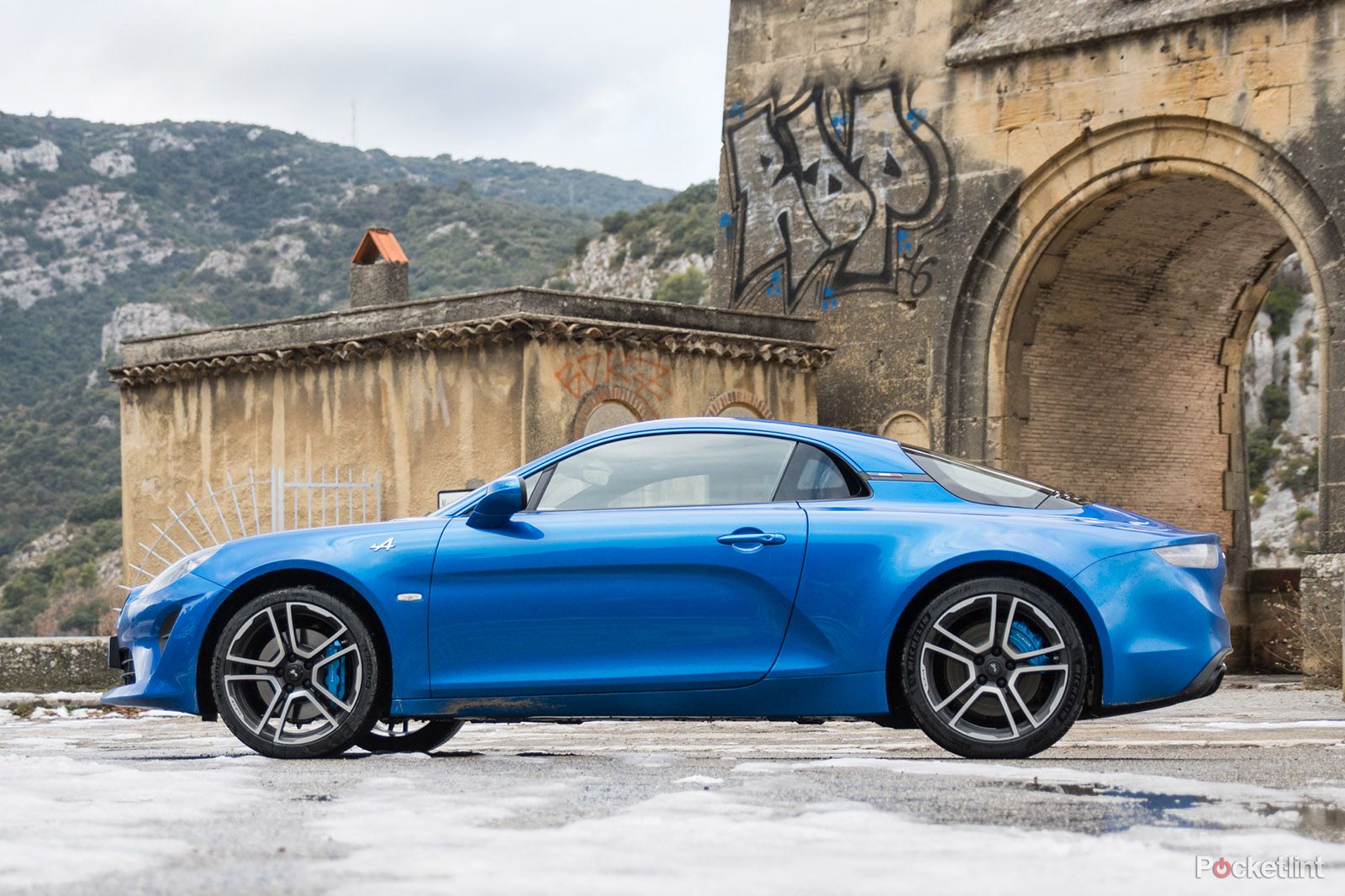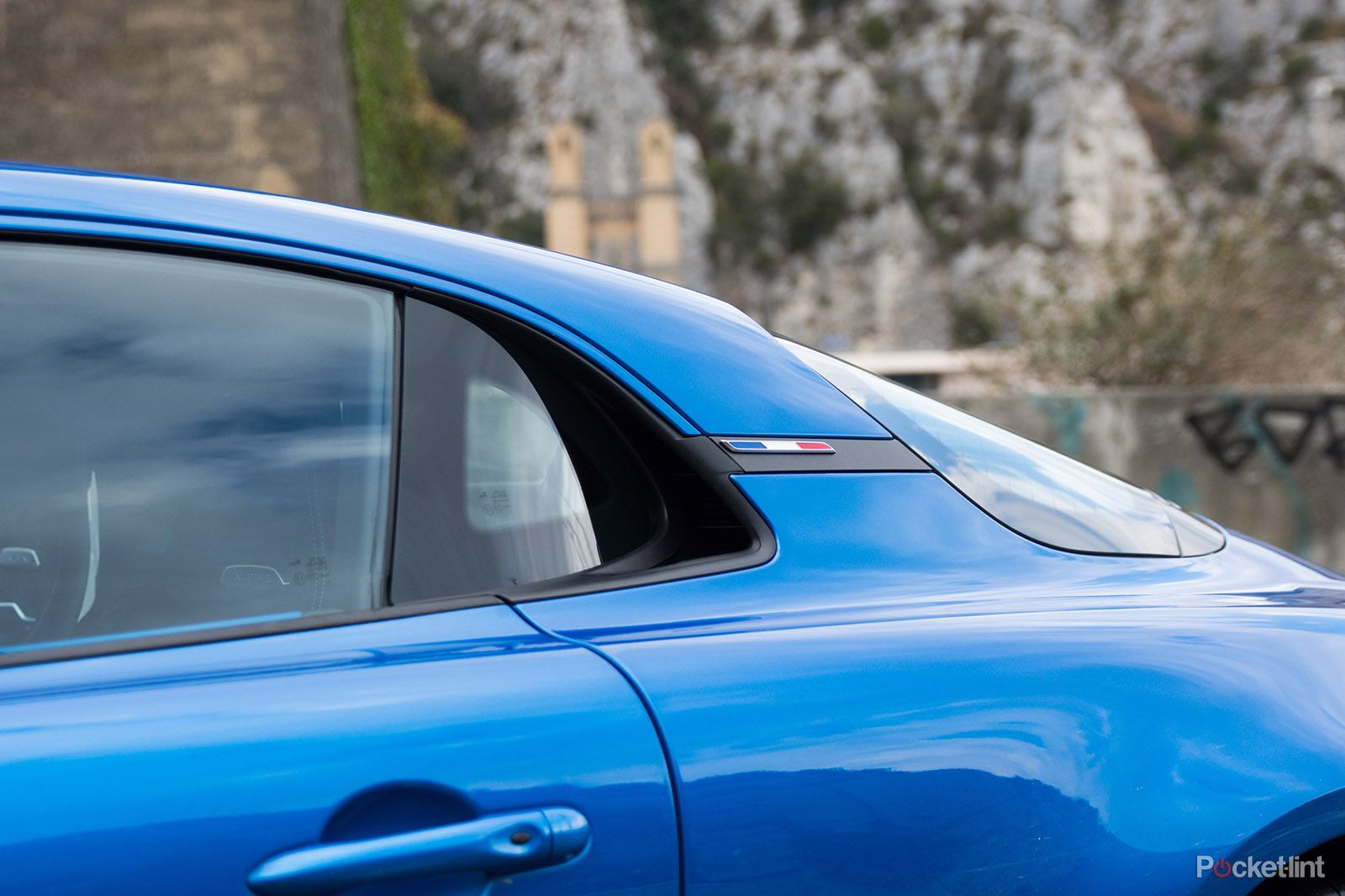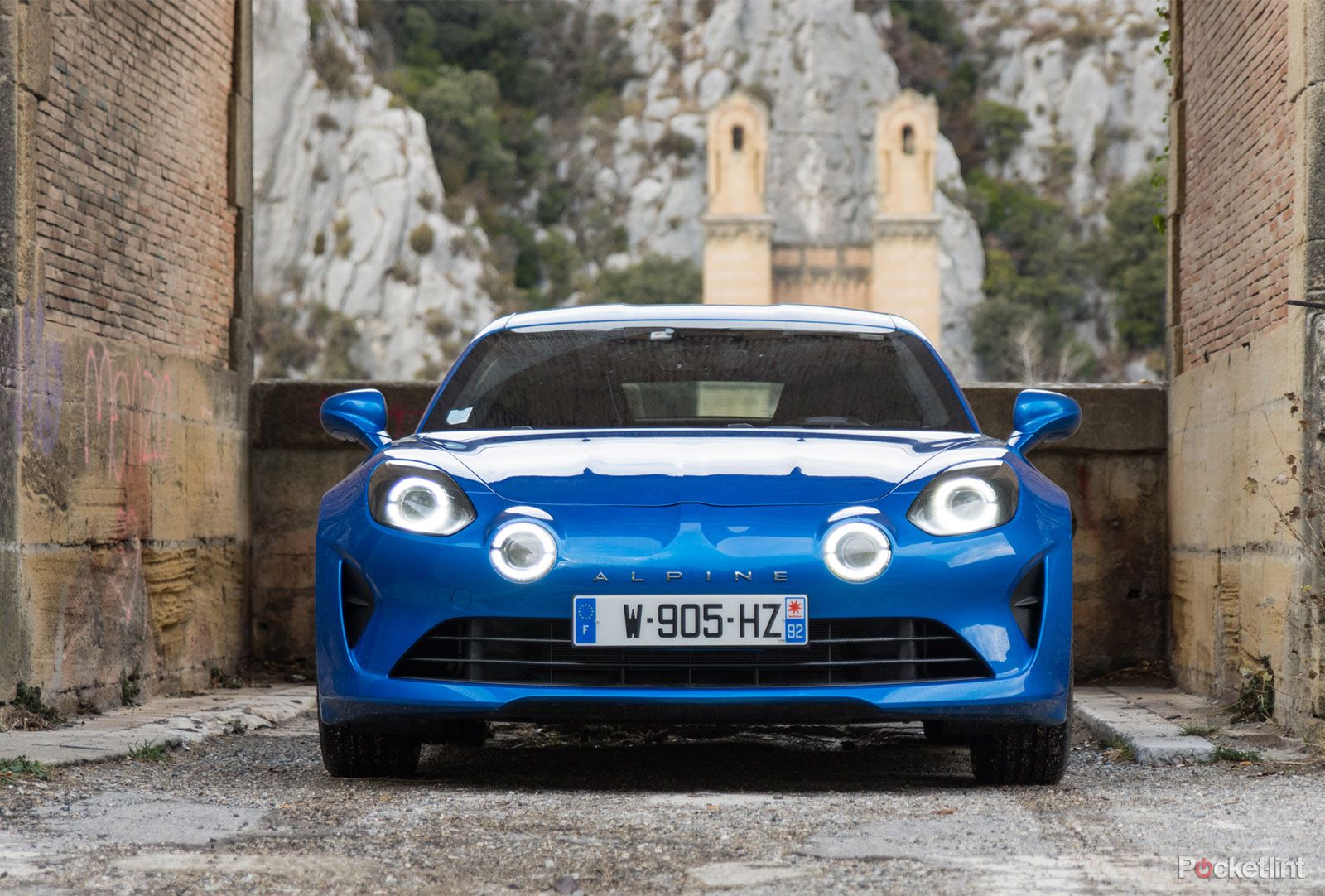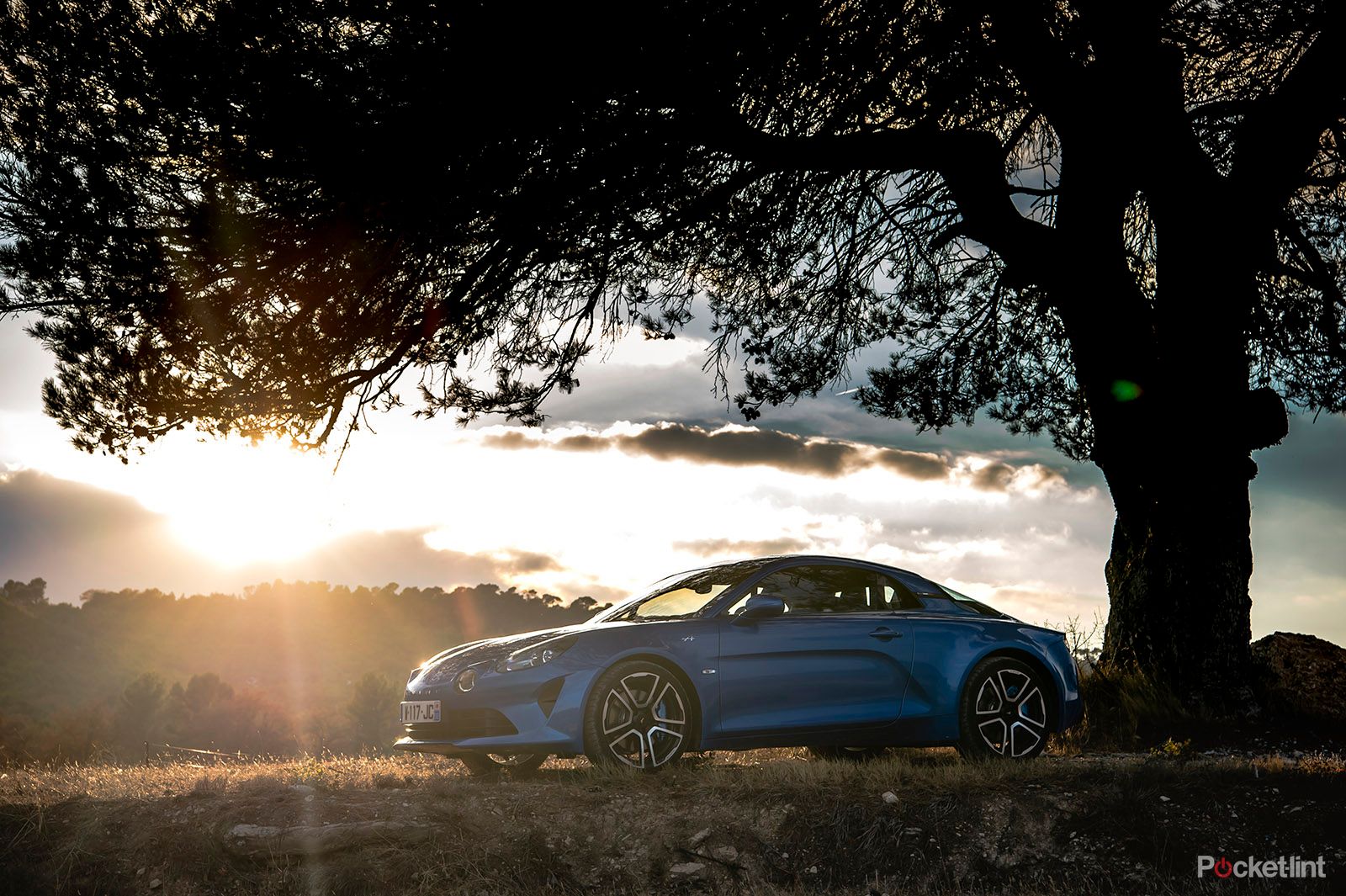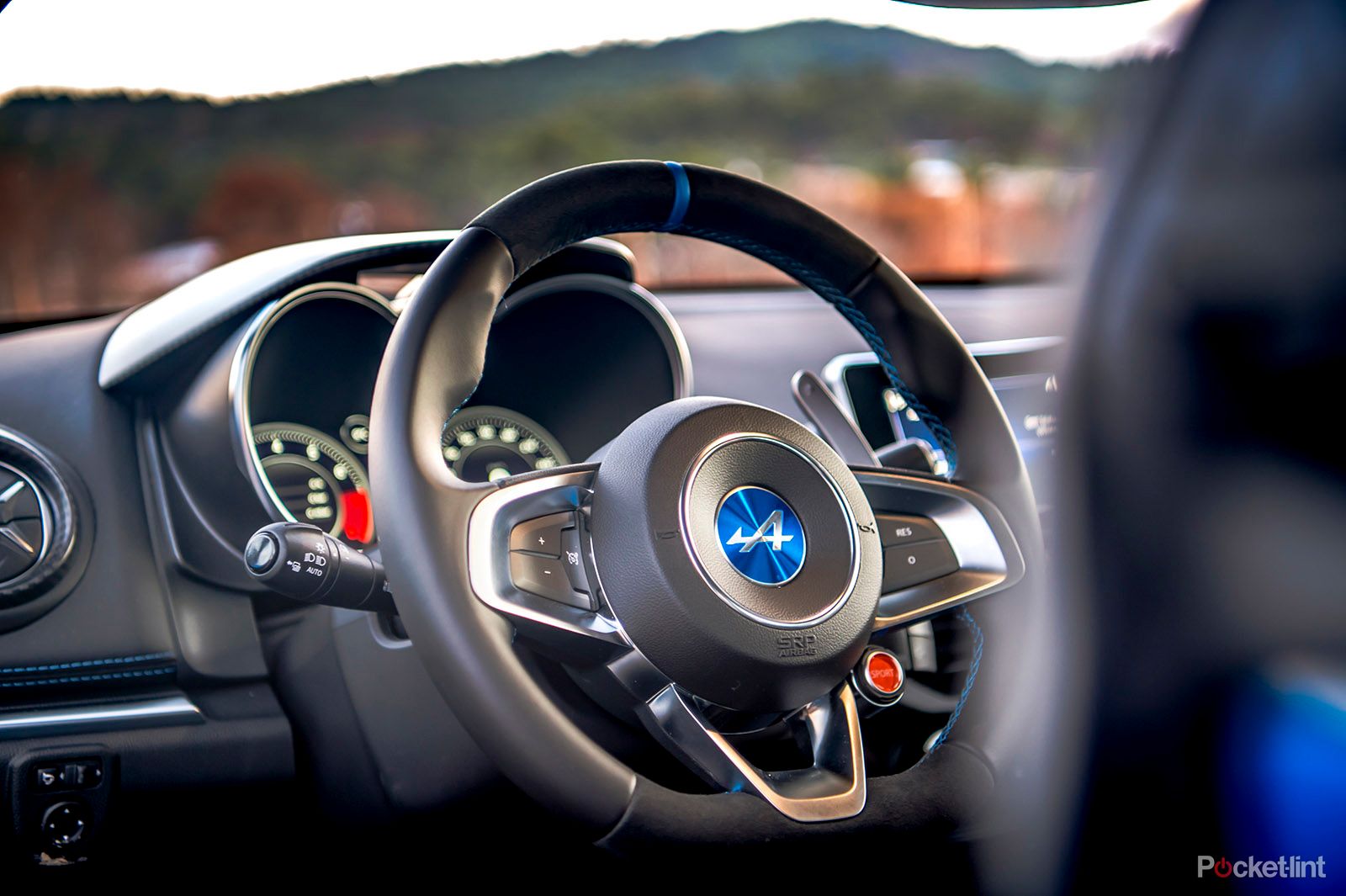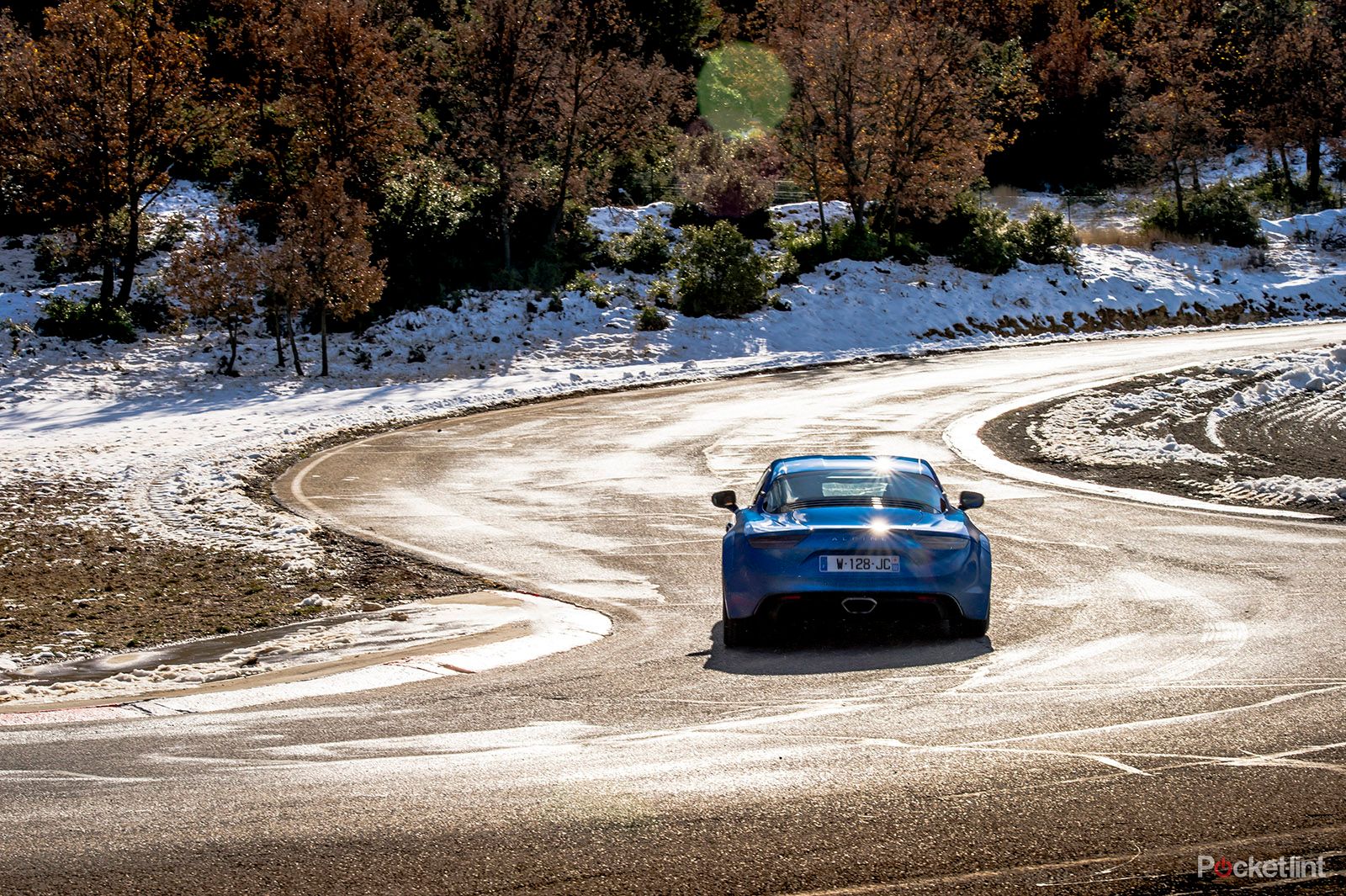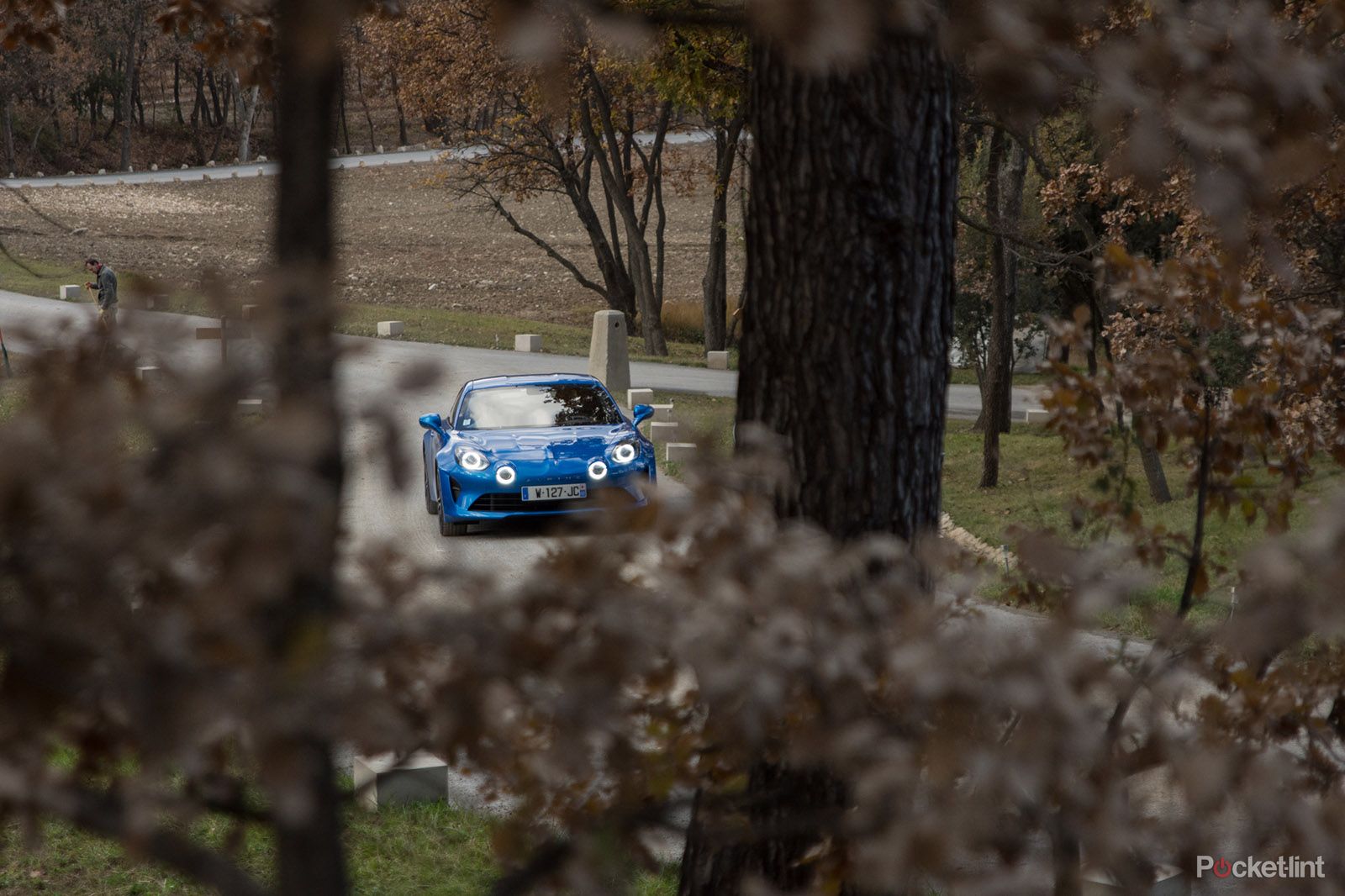To properly understand the modern Alpine A110 it helps to rewind to clock to 1955, when racing enthusiast and talented engineer Jean Rédélé decided to transform his passion for tuning old Renault 4 CVs into a legitimate business.
Our quick take
Alpine has managed to cram the best of so many great cars into one diminutive package. It's a magical place where the compact hot hatch hoonery of a Fiesta ST meets the rear-wheel drive poise of a Mazda MX-5 and chassis dynamics of a Toyota GT86.
The premium interior, unmistakably striking exterior design and potent performance figures elevate it to near-Porsche levels of desirability and the lightweight engineering genius will have Lotus fans salivating.
Granted, there are a few areas where compromise is clear (the indicator stalks and steering wheel volume controls are clearly pinched from cheaper Renaults and some of the interior plastics are scratchy), but the Alpine team knows this and gently reminds naysayers that it's a sub £50,000 car.
If customers can look past any badge snobbery and commit to spending circa £50K on a fancy Renault, then they will be the proud owners of something truly unique.
The A110 feels like just the beginning of a very exciting future for the resurrected Alpine brand.
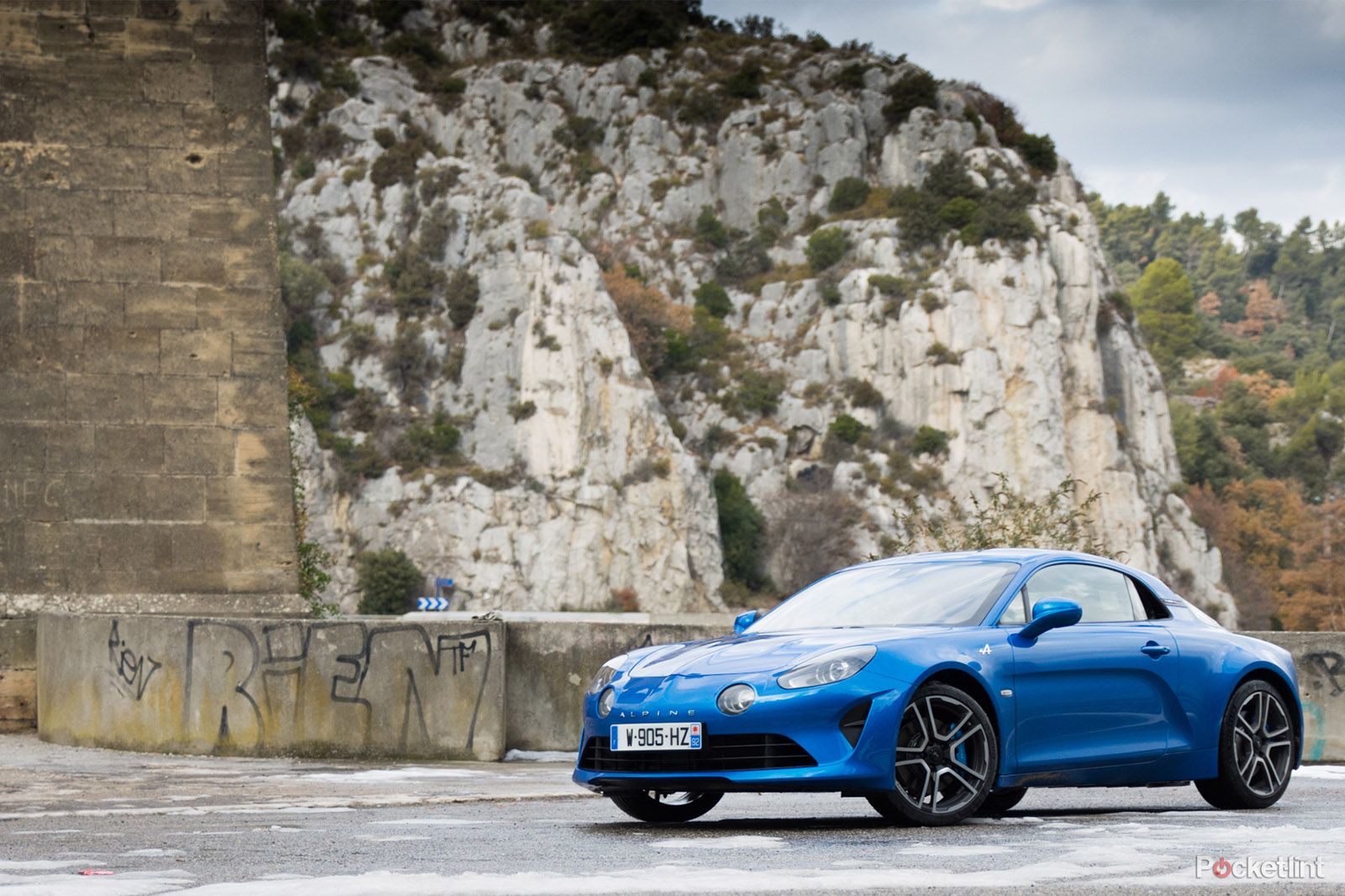
Alpine A110 - 5.0 / 5
| FOR | AGAINST |
|---|---|
|
|
Rédélé chose the Alpine name in tribute to the Coupe des Alpes rally, but the tight and twisting route of his beloved stage would also serve as the fundamental technical principles that his company was built upon. As a result, his products garnered legendary status amongst the racing fraternity.
The 1962 A110 Berlinette is arguably the most beautiful model in Alpine's relatively short history - and it is often considered the car that really kick-started Rédélé’s career, going on to win the gruelling Rallye Monte Carlo and notch up a number of high-profile wins.
Alas, Alpine ceased production in 1995 but Renault, which has owned the Alpine brand since 1973, announced it would re-launch the badge in 2012 with an exciting new A110 sports car.
However, this isn't your typical retro-modern marketing ploy, as the all-new A110 has been built from the ground up by a team of passionate designers and engineers, who have not only based themselves in Alpine's original factory in Dieppe, but have also applied those founding principles of compact, lightweight, unadulterated driving pleasure to this modern machine.
The design
Alpine has well and truly bucked the current trend for packing ever-more horses under the bonnet of today's sports cars.
This is a car that weighs just 1,080kg in its purest form (slightly fancier trim levels will tip the scales at 1,103kg) thanks to a lightweight aluminium construction, which stands just 1,252mm off the ground.
Its ultra-compact proportions are designed to mimic the original vehicle and offer the driver a sense of being at the centre of something small but fiery - or a behind the wheel of a "ball of energy", as the A110's head of engineering David Twohig described it to us.
This quest for a condensed footprint and massive reduction in weight presented numerous challenges for the engineering team, not least the sticky point of what would actually power the thing.
A lot of head scratching resulted in a 252hp, 1.8-litre, turbocharged four-cylinder engine being housed bang-slap in the middle of the vehicle (yes, a la Porsche).
That power figure might not seem like much on paper, but a power-to-weight ratio of 228hp per tonne is nothing to be sniffed at. In fact, it just beats the rival entry-level Porsche Cayman and results in a 0-62mph sprint time of 4.5 seconds. Yup, you guessed it. That's almost half a second quicker than the aforementioned Porker.
Styling-wise, chief designer Anthony Villan has largely remained true to the original vehicle, keeping the glorious falling rear silhouette (which remains uncluttered by any form of spoiler), three-dimensional rear glass, and those brilliantly retro quad front headlamps.
There's even a similar bonnet "spine" that runs up the front of the car, while the interior features numerous French flags, the original Alpine logo and quilted leather touches that hark back to the beautiful Berlinette of the 60s.
The engineering
It's possible to talk at great lengths about the engineering investments made during the Alpine A110's five-year-long developmental process. Rather than risk sending you off to the land of nod, we'd like to regale you with a couple of choice cuts that perfectly highlight the thought process behind the machine.
For a start, the cables that hold the handbrake in place are mounted to innovative pressed aluminium brackets, rather than boring old steel versions, just to save a bit of weight.
The windscreen wiping system is borrowed from the Mercedes-Benz S-Class and sees water forced up and out of the blades for a more economical clearing experience.
Not only do owners get S-Class levels of windscreen clarity, it also meant the engineers could put a tiny 1.5-litre washer fluid tank under the bodywork to save weight.
The Brembo brakes (a world first) feature just one set of brake pads, as opposed to the double set seen on most cars with an electronic handbrake. This means an electric actuator had to be designed and developed in order to press on the pads when the car is parked to... you guessed it, save weight.
All of these examples are before we get to the fact that chief engineer David Twohig set both a weight and width limit at the very beginning of the process, meaning his team had a tiny amount of space in which to fit an engine.
The gearbox is miniscule, radiators are mounted in weird places and the decision to fit chunky double-wishbone suspension in all four corners means there's very little in the way of luggage space.
But these are all compromises the team were willing to make in pursuit of driving excellence. And it has paid off.
The drive
To get caught up in displacement figures and lap times is to completely miss the point of the new Alpine A110: this is a car with the sole purpose of putting a grin on a driving enthusiast's face.
There is no fancy electronically adjustable suspension, just a very well judged chassis and innovative wishbone suspension that will happily tackle a track day, while proving comfortable around town or on longer journeys.
The engine is deliberately placed in the middle of the car, meaning there's a 44:56 weight distribution that gives it a brilliantly assured characteristic when pushed to the limits. It's playful but it doesn't feel like it's going to kill you.
Prod the big red starter button in the "flying buttress" centre console and the 1.8-litre engine barks into life with a surprisingly potent note.
There are two large aluminium shifters located behind the steering wheel that take care of the 7-speed dual clutch transmission (no manual option at the moment, we're afraid) and three buttons on the central console that flick between drive, park and reverse. Irritatingly, the neutral button has to be held down to access "park", while a similarly long press on the drive button shifts the vehicle into a manual-shifting gearbox mode.
There's also a small round button on the steering wheel that changes the dynamics of the vehicle, sharpens throttle response and adds weight to the steering. A single press for sports mode opens up the valves in the exhaust system and pumps more of the glorious noise into the cabin, while a long press (there's a pattern developing here) sticks it in track mode, which frees up the traction control system for some circuit-based tomfoolery and sees the A110 put on its most aggressive face.
Gear changes in track mode are visceral and thump both driver and passenger in the kidneys with every upshift, plus a long hold on the down shifter sees it rapidly skip down the cogs for lightning quick changes.
The all-aluminium chassis and suspension systems are firsts in the Renault-Nissan alliance. Many expensive hours were spent testing, honing and perfecting a unique under-floor diffuser so the designers could keep the iconic rear end free of a spoiler.
"We wanted normal people to be able to afford and enjoy this car," explains chief engineer David Twohig. "We wanted to take the customer's money and place it in the areas that really count - good brakes, great suspension and precise steering. To do this, we had to make some compromises," he adds.
As a result, there are areas where savings had to be made and thankfully, they are all completely forgivable after a few minutes driving this thing. It feels surprisingly fast and agile, with that turbocharged petrol engine doing a great job of firing the featherweight Alpine up the road.
The first corner we encountered during our test run highlights just how sorted the chassis is. The Alpine engineers claim they've kept a bit of pliancy in the suspension by working with a little bit of body roll, rather than against it. In short, the Alpine A110 takes bends like an absolute demon, with bags of grip at the limit, yet it remains a pretty comfortable proposition when pootling around town. All without the need for fancy (and heavy) electronic dampers.
The steering is perfectly weighted too, with plenty of connection to and feedback from the road beneath, which allows the driver to feel confident through the twisty stuff and proves an absolute hoot on the track.
Place the car in track mode or switch off the ESP altogether, push it hard on a slippery surface and the back end squirms and wriggles. Be smooth and considerate in your driving ways and the Alpine A110 tackles challenging Alpine routes with aplomb.
Take it on circuit and it reveals and even more confidence-inspiring side, never quite threatening to propel its cargo into a crash barrier, but providing enough thrills to have adrenaline levels spiking.
In a world where manufacturers are chasing enormous displacement figures and largely pointless Nürburgring lap times, or ignoring driving pleasure completely, the Alpine A110 feels like a revelation.
To recap
In a world where manufacturers are chasing enormous displacement figures and largely pointless Nürburgring lap times, or ignoring driving pleasure completely, the Alpine A110 feels like a revelation.

